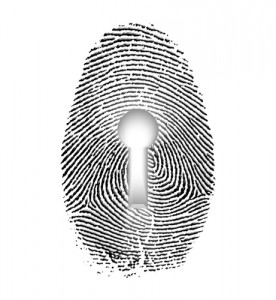As organizations and individuals continue to look for ways to ensure the security of digital information and move away from a world of passwords, one option that has been tossed around for several years includes the collection and analysis of specific human body characteristics. Eye retina scans, fingerprints and voice samples are all examples of a type of security system commonly referred to as biometrics.

It is important to note, however, that the use of biometrics is not a new concept. In fact, fingerprints have been in use since about 500 B.C., as Babylonian businessmen first pressed them into clay tablets to record business transactions.
Today, this digital security measurement is useful in some low-level security environments, such as clocking into a job— where convenience and ease of use are the primary drivers. In this regard, today’s technologies are making digital fingerprints useful for rudimentary authentication purposes.
When approached as the end-all, be-all solution for digital security, however, there are a few shortcomings that make biometrics less than ideal. Most notably, if stolen, a person’s identity would be in serious jeopardy.
While digital certificates can be revoked, once a person’s biometrics gets into the hands of a malicious third party, there is no way of getting the information back. You can’t, in other words, revoke someone’s DNA structure. For this reason, some jurisdictions maintain that biometrics be stored in devices controlled by the individual and not agencies or organizations.
Further drawbacks can be found in the difficulty and cost of actually collecting biometric information. Voice verification, for instance, requires little to no background interference to work properly. Facial recognition software mandates that a person match up evenly with a camera for authentication purposes. Additionally, a person’s face will change over time.
The use of biometrics presents an interesting case when it comes to the protection of digital information. Right now, options are readily available for consumers. However, until there is an affordable, secure solution to employing them, adoption will be slow.
What are your thoughts on biometrics? Do you have a comprehensive plan as to how they can be carried out in an effective manner? We would love to hear your thoughts in the comments section below.


